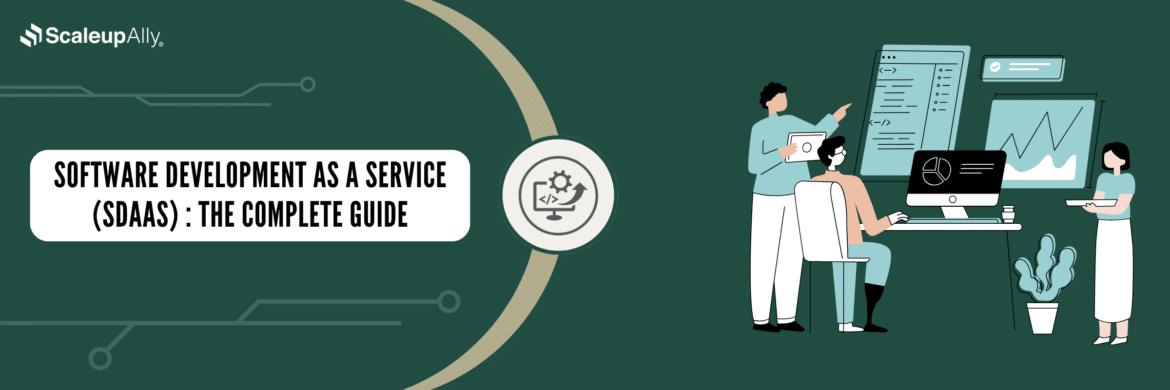
How Much Does It Cost To Develop An E-commerce Mobile App?
Manu Jain | September 30, 2023 , 11 min read
Table Of Content
E-commerce mobile applications have revolutionized the way we shop, providing convenience and accessibility to customers around the world. The increasing popularity of mobile commerce apps has led many businesses to invest in developing their own apps to enhance their online sales and provide a seamless shopping experience to their customers. However, the cost of developing an e-commerce mobile app can vary depending on several factors.
In this article, we will delve into the key factors that affect the cost of creating an e-commerce mobile app and provide a breakdown of the costs involved.
What Goal Is an E-commerce Mobile App Aiming to Achieve?
- What Goal Is an E-commerce Mobile App Aiming to Achieve?
- Factors Affecting E-commerce Mobile App Development Cost
- The hidden cost in Creating an E-commerce Mobile App
- Types of eCommerce Apps
- Tips to Reduce E-commerce Mobile App Development Cost
- Conclusion
- Frequently Asked Questions
- Other Articles Around Mobile App Development Costs
The purpose of an E-commerce mobile application is to provide customers with a straightforward and uncomplicated shopping experience. They should be able to browse items, look up products, put items into their carts, carry out secure payments, and keep track of their purchases through the app.
Furthermore, the app should offer features such as rapid access to customer service, personalized suggestions, reviews, and scores. With enhanced consumer involvement, pleasure, and commitment, the ultimate outcome is an increased income for the E-commerce business, which is the goal of an E-commerce mobile app.
Also Read: Time Required To Build E-commerce App
Factors Affecting E-commerce Mobile App Development Cost
Several factors influence the cost of developing an e-commerce mobile app. Understanding these factors will help you estimate the necessary resources and budget required for app development. Here are the key factors to consider:
1. App Design
The design of an e-commerce mobile app plays a crucial role in attracting and engaging users. A well-designed app with a user-friendly interface can enhance the user experience and increase customer satisfaction. The complexity of the design, the number of screens, and the design elements incorporated into the app can impact the development cost.
2. App Development Platform
The choice of app development platform can significantly affect the cost of e-commerce mobile app development. The most common platforms used for app development are iOS and Android. Developing an app for both platforms can increase the development cost. However, choosing a cross-platform development tool like React Native or Flutter can reduce the development cost by allowing code sharing between platforms.
3. App Uniqueness & Functionality
The uniqueness and functionality of an e-commerce mobile app play a significant role in determining its cost. A unique app with innovative features and a distinct user interface requires more time, effort, and resources during the development process. This can result in higher development costs compared to a generic e-commerce app.
Additionally, the functionality of the app also affects the cost. Advanced functionalities such as personalized recommendations, real-time inventory management, and seamless payment integration require complex coding and integration with various systems, which can increase the overall cost.
Therefore, you should carefully consider the desired uniqueness and functionality of their e-commerce mobile app while planning their budget to ensure they can meet their objectives without exceeding their financial limits.
4. App Maintenance
Maintaining an e-commerce mobile app is essential for its long-term success. Regular updates, bug fixes, and software upgrades are necessary to ensure that the app remains functional and up-to-date. The cost of app maintenance can vary depending on the complexity of the app, the frequency of updates required, and the level of support needed.
5. Other Factors
The cost can also be influenced by a few variables such as the size of the development team, where they are based, and the duration of the development process. A larger development team or a team located in a high-cost region may increase the development cost.
Creating an e-commerce mobile app may seem like a straightforward process, but there are hidden costs that businesses need to be aware of.
- One of the hidden costs is the need to use different software development kits (SDKs) and libraries. While many of these resources are free and open-source, there are some that require payment or offer premium features at a cost. You must factor in the expenses associated with accessing and utilizing these paid SDKs and libraries in their app development process.
- Another hidden cost in creating an e-commerce mobile app is the fee for distributing the app on platforms like the Apple App Store. For developers and associations planning to publish their applications on the App Store, there is an annual fee of $99 and Google Play comes with at $25 per account cost. This cost adds to the overall expense of developing and maintaining an e-commerce mobile app.
- Additionally, there could be a cost around the industry-specific requirements that the app may need to meet. This could include compliance regulations or integration with third-party systems, all of which come with their own set of costs.
Here’s an Updated Breakdown of The Different Costs Associated with Developing an E-Commerce Mobile App for Hybrid, iOS and Android Platforms:
| Cost Category | Hybrid Apps | iOS Apps | Android Apps |
| App Design | $1,000- $5,000 | $2,500- $7,500 | $1,000- $5,000 |
| App Development | $10,000- $50,000 | $25,000- $75,000 | $10,000- $50,000 |
| App Maintenance and Upgrades | $1,500- $10,000 + annually | $3,000- $10,000 + annually | $1,500- $10,000 + annually |
Types of eCommerce Apps
There are various types of eCommerce apps available that cater to different aspects of online businesses.
- B2C (Business-to-Consumer) eCommerce Apps: These are the most common eCommerce apps where businesses sell products directly to individual consumers. Examples include Amazon, Flipkart, and eBay.
- B2B (Business-to-Business) eCommerce Apps: These platforms facilitate transactions between businesses. They are often used for wholesale purchases. Alibaba and Shopify Plus are examples.
- C2C (Consumer-to-Consumer) eCommerce Apps: In these apps, individual consumers can buy and sell products to each other. eBay is a classic example of C2C eCommerce.
- Marketplace Apps: These platforms bring together multiple sellers and buyers. Sellers can list their products, and customers can choose from various options. Etsy and Airbnb are examples of marketplace apps.
- M-Commerce Apps: These are mobile commerce apps optimized for smartphones and tablets. They make it easy for users to shop on their mobile devices. Amazon and Walmart have dedicated mobile apps. Another example is Google Pay.
- Subscription Box Apps: These eCommerce apps offer subscription-based services, where customers receive products regularly, often monthly. Birchbox and Dollar Shave Club are examples.
- Niche or Specialty eCommerce Apps: These cater to specific niches or interests. They focus on unique products or a particular target audience. For example, GOAT specializes in sneakers.
- Dropshipping Apps: Dropshipping platforms allow entrepreneurs to start eCommerce businesses without holding inventory. Oberlo, for instance, is an app used with Shopify for dropshipping.
- Auction Apps: These apps enable users to bid on products, and the highest bidder wins. eBay’s auction feature is a well-known example.
- Flash Sale Apps: These apps offer limited-time sales and discounts, creating a sense of urgency among shoppers. Gilt and Zulily use this model.
- Social Commerce Apps: These blend social media and eCommerce, allowing users to shop directly through social platforms. Instagram Shopping and Facebook Marketplace are examples.
- Brick-and-Click Apps: These are used by businesses that have both physical stores and an online presence, enabling customers to shop online and pick up in-store.
- Rental and Sharing Economy Apps: Platforms like Airbnb and Turo enable users to rent or share assets, such as accommodations or vehicles.
Here’s an Updated Breakdown of Designing and Development of different types of E-Commerce Mobile App in Hybrid Technologies like React Native and Flutter by Country.
*prices are in USD
| Types of eCommerce App | Estimated Cost in India | Estimated Cost in USA | Estimated Cost in Australia |
| B2C (Business-to-Consumer) eCommerce Apps | $ 10,000-$15,000 | $ 50,000-$75,000 | $ 40,000-$60,000 |
| B2B (Business-to-Business) eCommerce Apps | $ 15,000-$30,000 | $ 60,000-$100,000 | $ 50,000-$85,000 |
| C2C (Consumer-to-Consumer) eCommerce Apps | $ 15,000-$30,000 | $ 60,000-$100,000 | $ 50,000-$85,000 |
| Marketplace Apps | $ 15,000-$30,000 | $ 60,000-$100,000 | $ 50,000-$85,000 |
| M-Commerce Apps | $ 15,000-$30,000 | $ 60,000-$100,000 | $ 50,000-$85,000 |
| Subscription Box Apps | $ 15,000-$30,000 | $ 60,000-$100,000 | $ 50,000-$85,000 |
| Niche or Specialty eCommerce Apps | $ 10,000-$15,000 | $ 50,000-$75,000 | $ 40,000-$60,000 |
| Dropshipping Apps | $ 10,000-$15,000 | $ 50,000-$75,000 | $ 40,000-$60,000 |
| Auction Apps | $20,000-$50,000 | $60,000-$150,000 | $50,000-$120,000 |
| Flash Sale Apps | $ 10,000-$15,000 | $ 50,000-$75,000 | $ 40,000-$60,000 |
| Social Commerce Apps | $ 15,000-$30,000 | $ 60,000-$100,000 | $ 50,000-$85,000 |
| Brick-and-Click Apps | $ 10,000-$15,000 | $ 50,000-$75,000 | $ 40,000-$60,000 |
| Rental and Sharing Economy Apps | $ 15,000-$30,000 | $ 60,000-$100,000 | $ 50,000-$85,000 |
Tips to Reduce E-commerce Mobile App Development Cost
While the cost of developing an e-commerce mobile app can vary, there are several tips you can follow to reduce the overall cost:
- Prioritize Features: Identify the essential features for your app and prioritize them based on their importance and impact on the user experience. This will help you focus on the most critical features and avoid unnecessary development costs.
- Use Cross-Platform Development Tools: Consider using cross-platform development tools like React Native or Flutter to build your app. These tools allow you to write code once and deploy it on multiple platforms, reducing development time and cost.
- Hire a professional development company: Hiring a professional development company can help reduce e-commerce mobile app development costs by leveraging their expertise and experience, reducing the need for in-house resources and training. Talk to ScaleupAlly’s experts to discuss your requirements.
- Optimize Design and User Experience: Invest in a well-designed user interface that provides a seamless and intuitive experience for your users. A user-friendly design can enhance customer satisfaction and reduce the need for extensive development and maintenance.
- Choose the Right Development Team: Select a development team with experience in e-commerce app development. A skilled team can efficiently develop your app, reducing the development time and cost.
- Minimize Third-Party Integrations: Limit the number of third-party integrations in your app to reduce complexity and development costs. Only integrate the necessary integrations that are essential for your app’s functionality.
- Plan for App Maintenance: Consider the long-term maintenance and support of your e-commerce app during the development phase. Planning for maintenance from the beginning can help you avoid unexpected costs in the future.
By following these tips, you can optimize the development process and effectively reduce the cost of creating an e-commerce mobile app.
Conclusion
The cost of developing an e-commerce mobile app depends on various factors such as app design, development platform, functionality, payment gateway integration, maintenance, and marketing. It’s important to carefully consider these factors and prioritize your app’s features to ensure a successful and cost-effective development process. By following best practices and working with a skilled development team, you can create a high-quality e-commerce mobile app within your budget.
Frequently Asked Questions
Q: Are there any ongoing costs associated with e-commerce mobile app development besides maintenance?
Yes, besides maintenance, there are costs for distributing the app on platforms like the Apple App Store (annual fee of $99) and Google Play ($25 per account). Additionally, industry-specific requirements or third-party integrations may incur extra expenses.
Q: What are the advantages of using a professional development company for e-commerce app development?
Hiring a professional development company can bring expertise, reduce the need for in-house resources, and expedite the development process. It can also lead to cost savings in the long run by avoiding mistakes and inefficiencies.
Q: What security measures should I take to protect user data in my e-commerce app?
A: E-commerce apps deal with sensitive user data, so it’s crucial to implement robust security measures, including data encryption, secure authentication, and regular security audits to protect user information.
Q: Do I need to comply with specific regulations when developing an e-commerce app, such as GDPR or PCI DSS?
Yes, depending on your target audience and the types of data you collect, you may need to comply with regulations like GDPR (for European users) or PCI DSS (for payment card data). It’s essential to understand and adhere to relevant legal requirements.
Other Articles Around Mobile App Development Costs
Related Blogs

Future of Software Development: 11 Trends & Business Impact
Discover 11 software development trends driving the future of tech. Get key insights, key statistics and explore the business impact of next-gen development practices.
Suprabhat Sen
May 1 ,
10 min read

36 Game-Changing Low-Code Trends to Know in 2025
Explore 36 low-code trends redefining app development in 2025. Learn how businesses are leveraging low-code platforms for speed, scalability and innovation.
Suprabhat Sen
May 1 ,
11 min read

Software Development as a Service(SDaaS): The Complete Guide
Explore how SDaaS can streamline your development process, reduce costs, and boost your competitive edge. Learn how SDaaS can empower your business.
Suprabhat Sen
Apr 29 ,
16 min read








